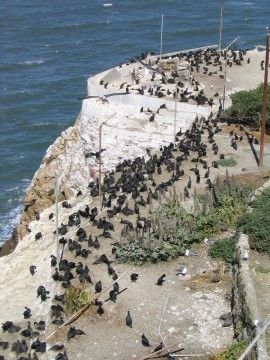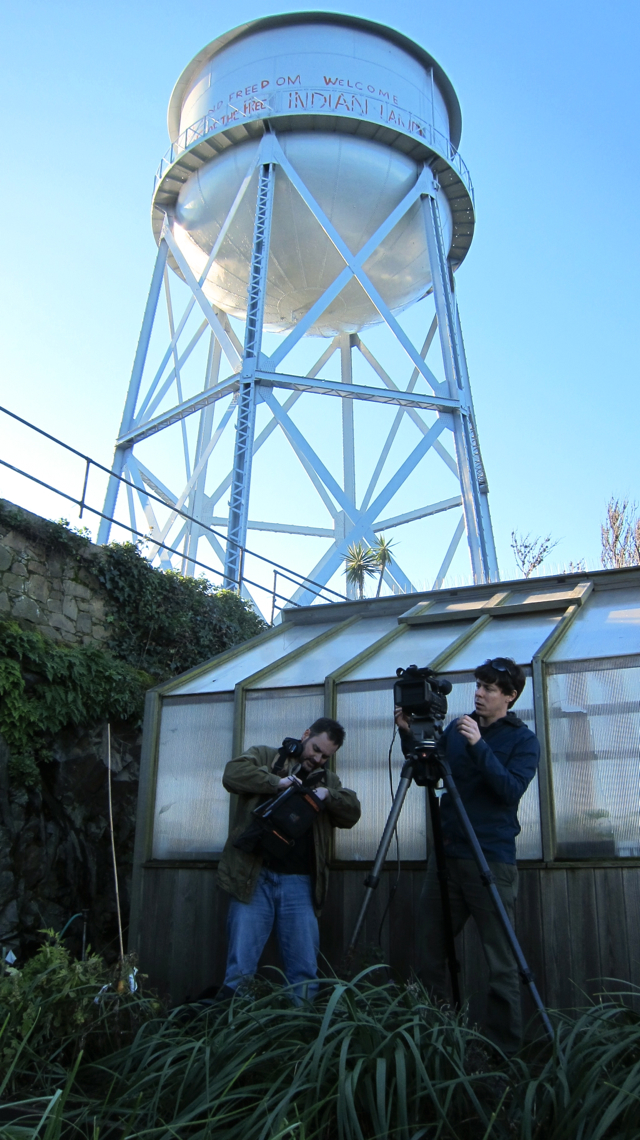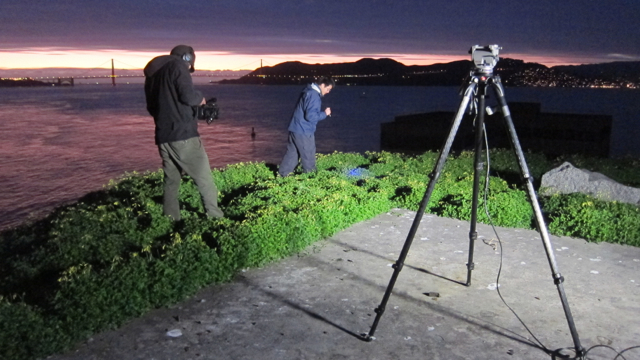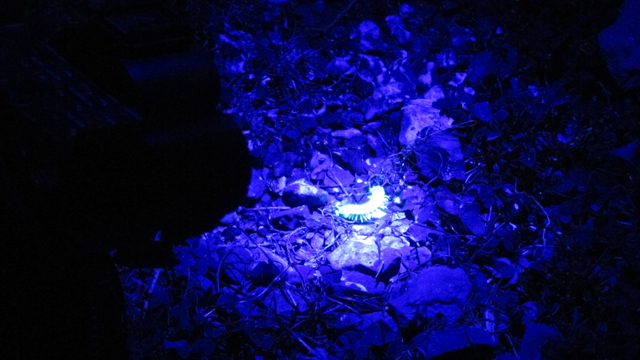
Last March, one of our QUEST contributors, Thibault Worth, wrote a piece about the fluorescent millipedes that were unexpectedly discovered on Alcatraz during a survey of the rat population on the island. As we were eager to learn more about these fascinating arthropods, I and my several of my KQED Science colleagues headed to Alcatraz with forensic entomologist Dr. Robert Kimsey, the National Park Service's Integrated Pest Manager Bruce Badzik and the UC Davis Entomology Club.
This was my first visit to Alcatraz, and my general impression of the island was as Badzik described it to me during our interview: “Most people are fascinated with the history of the federal penitentiary on Alcatraz because of the well-known criminals such as Al Capone, “Creepy” Karpis, the “Birdman of Alcatraz” and Machine Gun Kelly. There were also a lot of movies made about Alcatraz: Murder In The First, The Rock, Escape From Alcatraz with Clint Eastwood. So people love to come out to see where those films were filmed and see what they can see of it.”
I didn’t realize it also has a thriving water bird population and serves as a sanctuary to a diverse number of species.
“Folks who may not be interested in the prison love to come out here and see the large quantities of birds that we have that inhabit the island, such as the pelicans, the Brandt’s cormorants, the black-crowned night herons, the snowy white egret, mallards and a whole host of other sea birds that call this place home,” says Badzik.

And the name of the island is derived from the Spanish word, "alcatraces", another indicator of its avian history.

